Drying Silk Without Heat: Avoiding Shrinkage and Damage
As a silk enthusiast, I understand the importance of proper care to maintain the quality and longevity of this luxurious fabric.
Silk is a delicate material that requires special attention, especially when it comes to drying.
In this article, I’ll guide you through the process of drying silk fabrics without using heat, ensuring your precious garments remain in pristine condition.
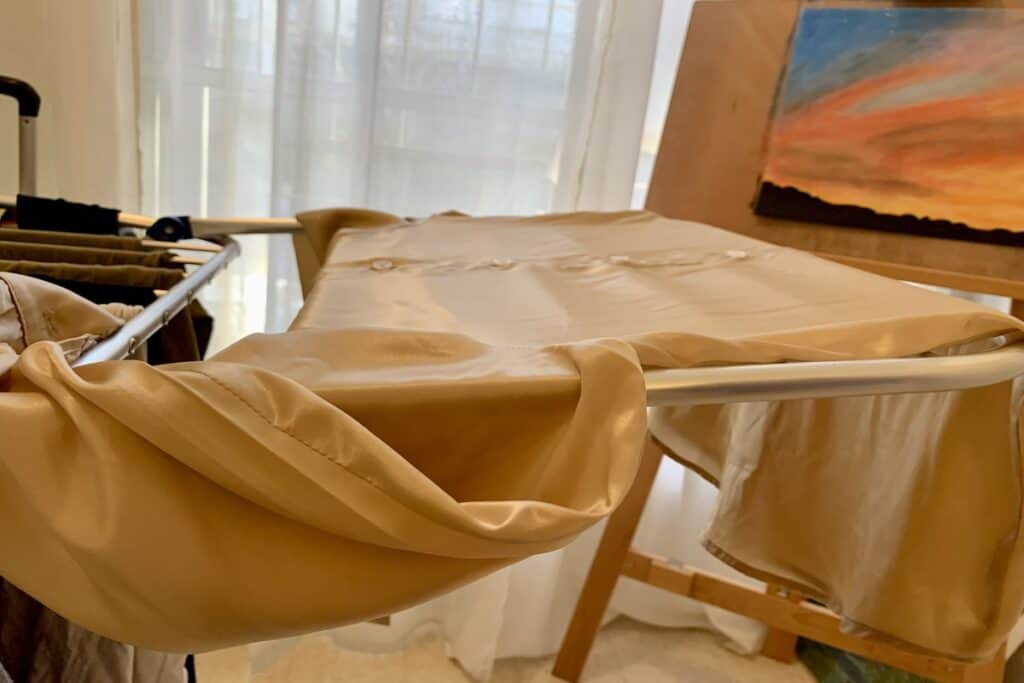
The Risks of Heat on Silk Fabric
Heat and silk are not the best of friends. Exposing silk to high temperatures can lead to various problems, including:
- Shrinkage: Silk fibers can contract and become misshapen when subjected to heat, resulting in your once-perfect garment becoming unwearable.
- Texture Damage: The smooth and lustrous texture that makes silk so desirable can be compromised, leaving you with a rough and dull fabric.
- Color Fading: Vibrant silk colors can fade or become dull when exposed to excessive heat.
You might be tempted to ask whether you can put silk in a dryer on low, or at what temperature silk shrinks.
The truth is, even low heat settings can pose risks to your silk treasures. It’s best to avoid heat altogether when drying silk.
Wondering if you can put silk in the dryer? I did some research to find the answer.
Safe Alternatives to Drying Silk
The safest and most effective way to dry silk is through air drying. By allowing the fabric to dry naturally, you preserve its integrity and prevent the potential damage caused by heat.
Here’s how to air dry silk correctly:
- Gently roll the damp silk garment in a clean, absorbent towel to remove excess moisture.
- Lay the silk flat on a drying rack or hang it on a sturdy, non-abrasive hanger.
- Ensure the drying area is well-ventilated but away from direct sunlight, as UV rays can cause silk to yellow over time.
- Reshape the garment periodically during the drying process to prevent creases or wrinkles from setting in.
- Avoid twisting or wringing the silk, as this can cause distortion or damage to the delicate fibers.

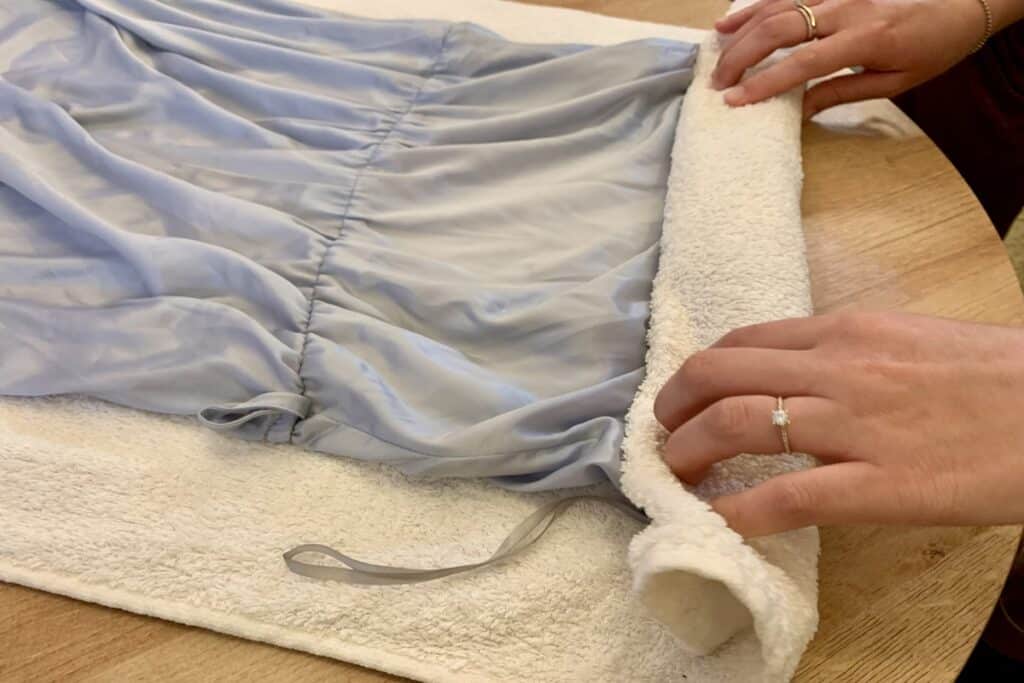
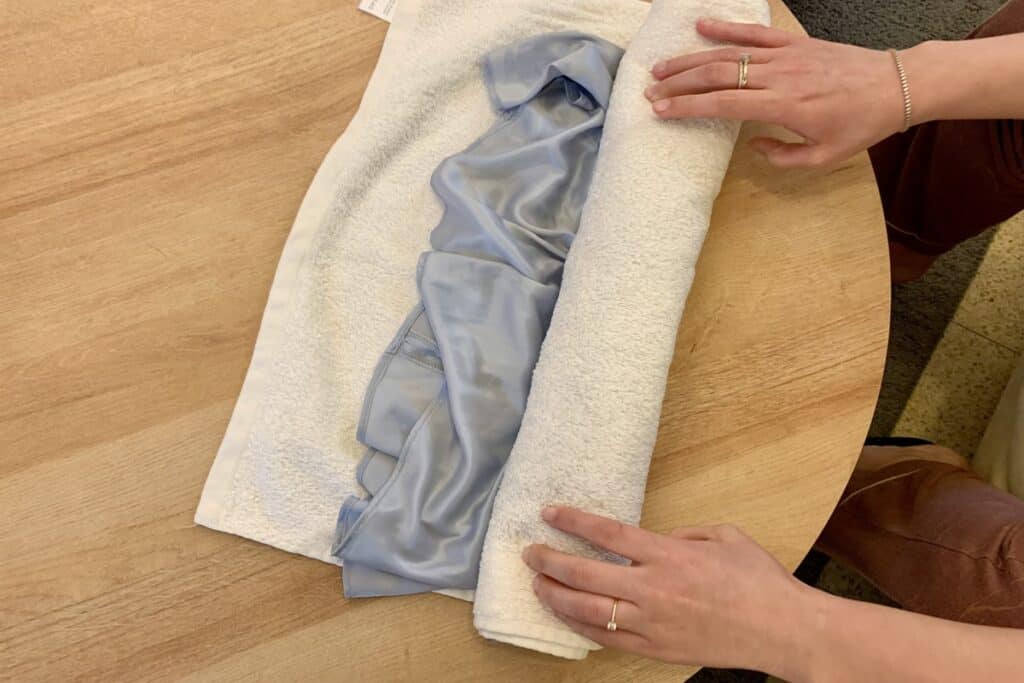

The Myth of Using Hairdryers on Silk
The short answer is that drying silk with a hairdryer is not recommended.
While a hairdryer may seem like a quick solution, the concentrated heat can be detrimental to the silk fibers.
Here are a few reasons why you should avoid using a hairdryer on silk:
- Uneven Drying: Hairdryers can cause some areas of the fabric to dry faster than others, leading to potential shrinkage or distortion.
- Heat Damage: Even on a low setting, the heat from a hairdryer can be too intense for delicate silk, causing the fibers to weaken or break.
- Static Electricity: The high airflow from a hairdryer can generate static electricity, which can cause the silk to cling or attract lint and dust.
Instead of risking damage with a hairdryer, consider investing in a high-quality garment steamer or iron (on a silk setting) to remove any remaining wrinkles after air drying.
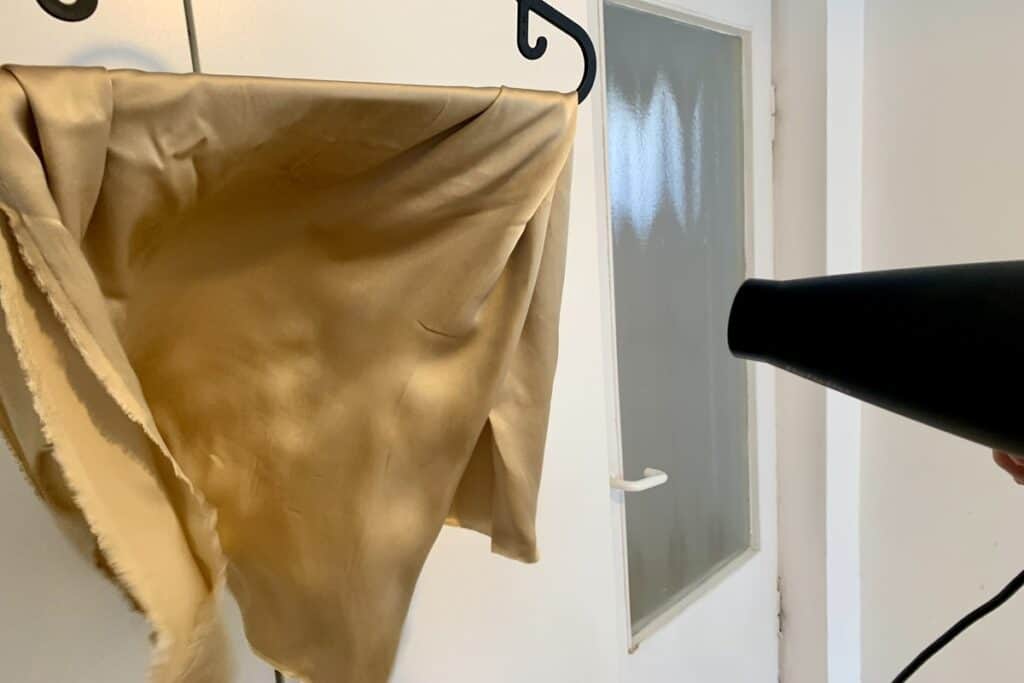
How Silk Compares to Other Fabrics
While silk is notoriously sensitive to heat, it’s essential to understand how it fares against other popular fabrics in terms of heat resilience.
This knowledge can help you make informed decisions when caring for garments made from various materials.
| Fabric Type | Heat Resilience | Notes |
| Silk | Low | Susceptible to shrinkage, texture damage, and color fading at high temperatures. Requires delicate care and air drying. |
| Cotton | Moderate | Can withstand higher temperatures than silk, but prolonged exposure to heat can cause shrinkage and fading. |
| Linen | High | Highly heat-resistant and less prone to shrinking or fading when exposed to high temperatures. |
| Polyester | High | Synthetic fibers are generally heat-resistant and can be dried using higher heat settings without significant damage. |
| Wool | Moderate to High | Can tolerate moderate heat levels, but excessive heat can cause felting and shrinkage. |
As you can see from the table, silk stands out as one of the least heat-resistant fabrics, requiring extra care and attention when drying.
In contrast, synthetic fabrics like polyester and natural fibers like linen are more resilient to heat, allowing for more flexibility in drying methods.
However, it’s important to note that while some fabrics may tolerate higher temperatures, excessive heat can still cause long-term damage or premature aging to any textile.

Selecting the Right Dryer Setting (If You Must)
In unavoidable situations, you might find yourself wondering, “What is the best dryer setting for silk?” If you absolutely must use a dryer, here are some crucial guidelines:
- Use the lowest heat setting possible, or better yet, the “air fluff” or “no heat” cycle.
- Place the silk items in a mesh bag or pillowcase to prevent tangling or twisting.
- Add a few clean, dry towels to the dryer to absorb moisture and reduce drying time.
- Check the garments frequently and remove them as soon as they are barely damp to the touch.
Remember, using a dryer on silk should be an absolute last resort, and even then, proceed with extreme caution.
Dealing with Accidents: Silk in the Dryer
We’ve all been there – accidentally putting a silk garment in the dryer, only to realize the mistake too late.
If you find yourself in this unfortunate situation, don’t panic! Here are some steps you can take to minimize the damage:
- Remove the silk item from the dryer immediately, even if the cycle is not complete.
- Gently reshape the garment to its original form, being careful not to stretch or pull the fabric.
- Fill a clean spray bottle with cool water and lightly mist the silk, allowing the fibers to relax.
- Lay the garment flat or hang it to air dry, following the safe air drying methods outlined earlier.
- Consider taking the item to a professional dry cleaner for proper cleaning and reshaping if significant damage has occurred.
While accidents happen, prompt action can sometimes salvage your beloved silk pieces.

Understanding Silk’s Drying Time
One common question that arises is, “How long does silk take to air dry?” The answer can vary depending on several factors:
- Fabric Thickness: Heavier silk fabrics, such as silk dresses or jackets, will take longer to dry than lightweight silk blouses or scarves.
- Humidity Levels: Silk dries faster in low-humidity environments compared to humid conditions.
- Air Circulation: Proper ventilation and airflow will expedite the drying process.
To help you gauge the approximate drying times, here’s a handy table:
| Silk Fabric Type | Approximate Drying Time (Hours) |
| Lightweight Blouse | 2-4 |
| Silk Scarf | 1-3 |
| Silk Dress | 6-10 |
| Silk Jacket | 8-12 |
Keep in mind that these are rough estimates, and actual drying times may vary based on the factors mentioned above.
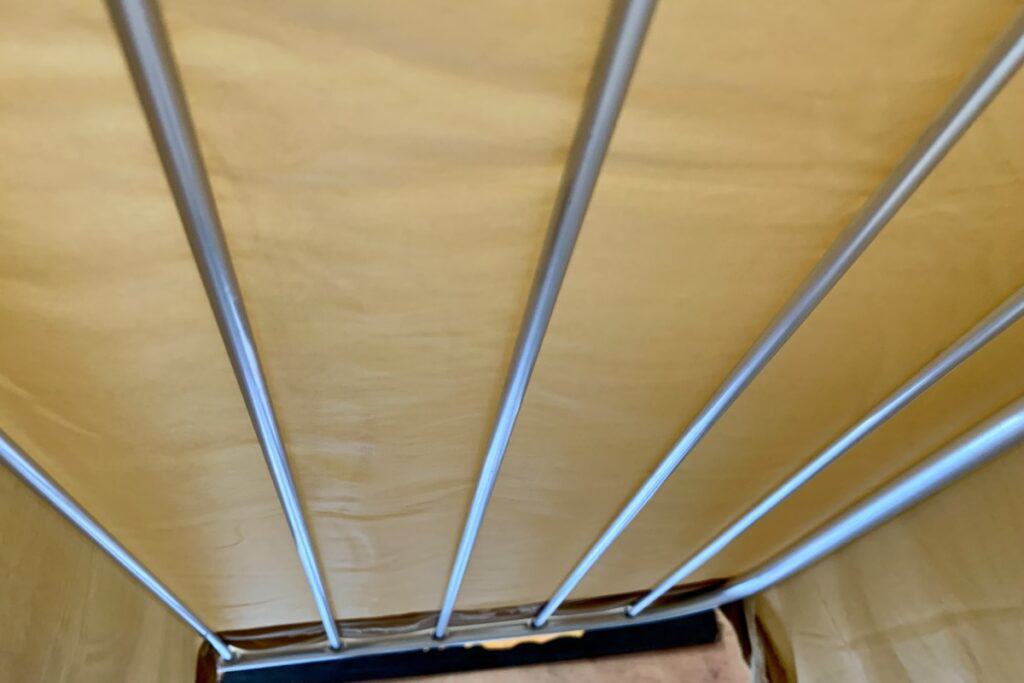
How Can I Quickly Dry Silk Garments in a Hurry?
While air drying is the safest method, there may be instances where you need to dry silk garments quickly.
In such cases, consider using a fan or dehumidifier to increase air circulation and speed up the drying process.
Additionally, you can try rolling the damp silk garment in a clean, dry towel to absorb excess moisture before laying it flat to dry.
However, be cautious not to wring or twist the fabric, as this can cause distortion or damage.
Remember, while these methods may help expedite the drying process, they should be used with caution and moderation, as excessive heat or improper handling can still potentially harm your delicate silk garments.
In my journey with silk, I found out how effortlessly silk dries, making maintenance a breeze.
How to Use a Dehumidifier to Help Dry Silk Faster
Using a dehumidifier can be an effective way to speed up the drying process for silk garments, as it removes moisture from the air.
However, it’s essential to exercise caution and avoid placing the silk items too close to the dehumidifier, as the concentrated airflow and drying effect can potentially cause uneven drying or over-drying in some areas.
Instead, position the dehumidifier in the same room as the drying rack or hang the silk garments, maintaining a reasonable distance to allow for even, gradual drying.

Is It Okay to Use a Drying Cabinet or Heated Drying Rack for Silk?
Using any heated drying methods like drying cabinets or heated racks is not recommended for silk fabrics.
Even low levels of heat can potentially damage or shrink delicate silk fibers. Stick to air drying silk at room temperature on a regular, non-heated drying rack or flat surface.
Conclusions
Preserving the beauty and integrity of your silk garments is essential, and avoiding heat during the drying process is a crucial step.
By following the recommended methods of air drying, you can ensure your silk pieces retain their luxurious texture, vibrant colors, and perfect fit for years to come.
I encourage you to embrace the art of silk care and share your experiences or tips for drying silk safely.
Additionally, explore other articles on silk care and maintenance to further enhance your knowledge and appreciation for this remarkable fabric.
Remember, with a little extra care and patience, your silk treasures will remain a cherished part of your wardrobe for many years to come.
